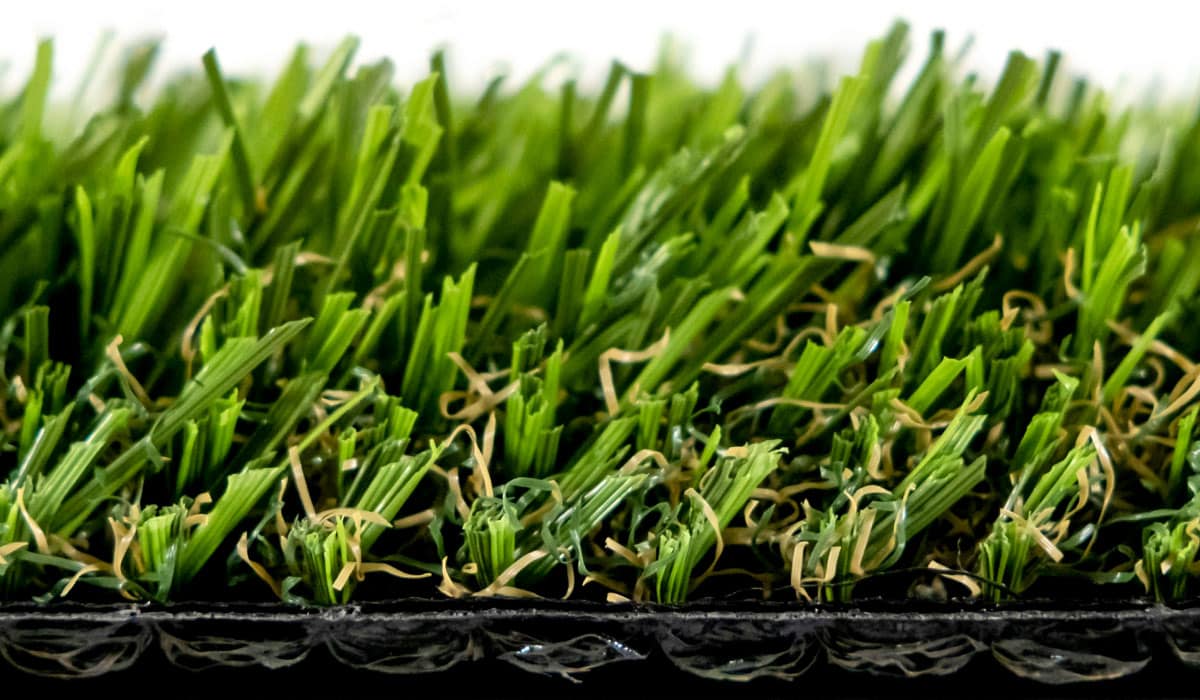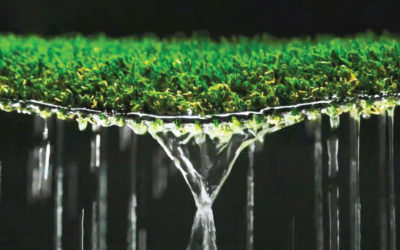
Artificial turf has revolutionized outdoor landscapes, from residential lawns to sports fields and commercial spaces. At the heart of this transformation lies the backing, a critical component that provides stability, durability, and structural integrity to artificial turf. In this comprehensive guide, we delve deep into the diverse world of artificial turf backing, exploring its various types and materials, their unique properties, and their suitability for different applications.
Latex Backing
Latex backing stands as one of the most prevalent choices for artificial turf. It comprises a water-based adhesive applied to the underside of the turf, solidifying as it dries. Known for its flexibility and stability, latex backing is an excellent fit for areas with moderate foot traffic, including residential lawns and landscaping projects. Moreover, its affordability makes it a favored option for budget-conscious consumers.
Properties of Latex Backing:
- Versatility across a range of applications.
- Solid stability and flexibility.
- Budget-friendly compared to alternative backings.
Suitability:
Latex backing thrives in residential lawns and landscaping projects with moderate foot traffic. However, it may not withstand heavy foot traffic or extreme weather conditions as effectively as other backing types.
Polyurethane (PU) Backing
For those seeking top-tier durability and resistance, Polyurethane (PU) backing shines as a premium choice. PU backing surpasses latex in terms of longevity and resilience, making it the go-to option for high-traffic areas and challenging weather conditions. Additionally, it boasts superior dimensional stability, ensuring minimal shrinkage or expansion with temperature variations. This makes it an ideal selection for sports fields, commercial landscapes, and any setting demanding peak performance.
Properties of Polyurethane Backing:
- Exceptional durability and wear resistance.
- Well-suited for high-traffic areas and extreme weather.
- Superior dimensional stability.
Suitability:
Polyurethane (PU) backing excels in sports fields, commercial landscapes, and areas with heavy foot traffic or harsh weather conditions, prioritizing durability and stability.
Polyolefin Backing
As eco-consciousness grows, so does the popularity of Polyolefin backing. Crafted from recyclable materials, Polyolefin backing treads lightly on the environment. It offers reliable durability and stability, rendering it suitable for areas with moderate foot traffic. For environmentally aware consumers keen on reducing their carbon footprint, this backing stands as a sustainable choice.
Properties of Polyolefin Backing:
- Eco-friendly composition from recyclable materials.
- Offers good durability and stability.
Suitability:
Polyolefin backing shines in moderate foot traffic areas, making it an ideal option for environmentally conscious consumers championing sustainability.
Polypropylene (PP) Backing
Polypropylene (PP) backing finds its place in the realm of artificial turf due to its outstanding dimensional stability and moisture resistance. Ideal for locales with high humidity or substantial rainfall, PP backing promises exceptional durability and stability. It serves as a reliable choice across diverse applications, encompassing sports fields, commercial landscapes, and playgrounds.
Properties of Polypropylene Backing:
- Impressive dimensional stability and moisture resistance.
- Suited for regions with high humidity or heavy rainfall.
- Good durability and stability.
Suitability:
Polypropylene backing, with its remarkable flexibility and capacity to be woven into sturdy sheets, finds an ideal home in the backing of many artificial grass products. Its versatility ensures good durability and stability, making it a smart choice for areas with moderate to heavy foot traffic.
Dual Backing
Dual backing combines the strengths of latex and polyurethane, offering a powerful composite solution. The turf initially receives a latex layer for flexibility, followed by a polyurethane layer for enhanced durability. This synergy results in excellent stability, durability, and dimensional stability, making dual backing the perfect choice for high-traffic areas and extreme weather conditions.
Properties of Dual Backing:
- Combines the advantages of latex and polyurethane backing.
- Provides superior stability, durability, and dimensional stability.
Suitability:
Dual backing excels in areas with heavy foot traffic or challenging weather conditions, delivering the utmost in durability and stability.
Conclusion
The backing of artificial turf is a crucial component that contributes to its stability, durability, and performance. Different types of backing, including latex, polyurethane, polyolefin, and polypropylene, offer various benefits and suitability for different applications. Latex backing is a budget-friendly option for residential lawns, while polyurethane backing provides superior durability for high-traffic areas. Polyolefin backing is an eco-friendly option, and polypropylene backing offers excellent dimensional stability and moisture resistance. Consider the specific needs of your project and consult with a professional to choose the right type of artificial turf backing for your needs.

